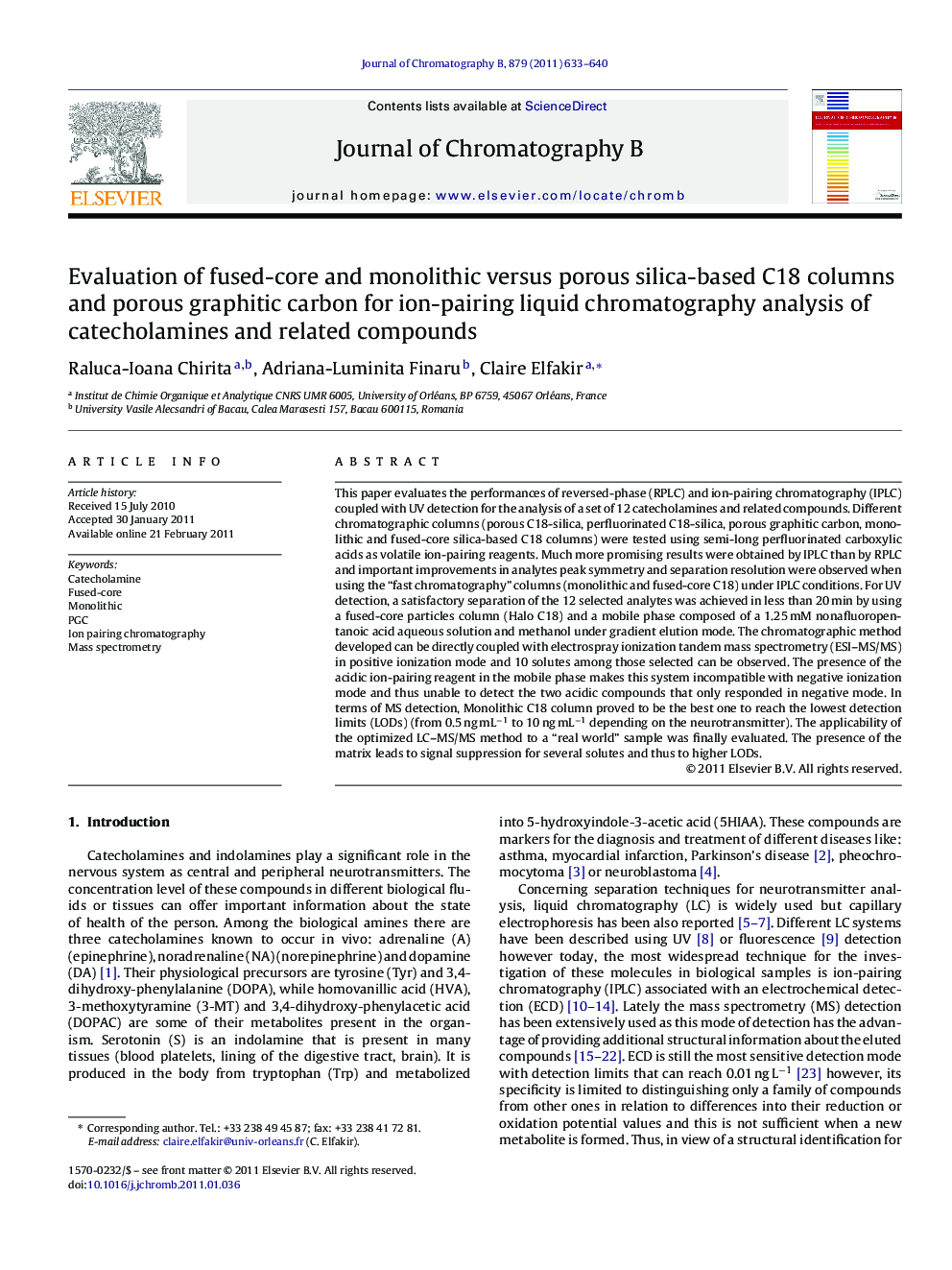| کد مقاله | کد نشریه | سال انتشار | مقاله انگلیسی | نسخه تمام متن |
|---|---|---|---|---|
| 1213643 | 1494147 | 2011 | 8 صفحه PDF | دانلود رایگان |

This paper evaluates the performances of reversed-phase (RPLC) and ion-pairing chromatography (IPLC) coupled with UV detection for the analysis of a set of 12 catecholamines and related compounds. Different chromatographic columns (porous C18-silica, perfluorinated C18-silica, porous graphitic carbon, monolithic and fused-core silica-based C18 columns) were tested using semi-long perfluorinated carboxylic acids as volatile ion-pairing reagents. Much more promising results were obtained by IPLC than by RPLC and important improvements in analytes peak symmetry and separation resolution were observed when using the “fast chromatography” columns (monolithic and fused-core C18) under IPLC conditions. For UV detection, a satisfactory separation of the 12 selected analytes was achieved in less than 20 min by using a fused-core particles column (Halo C18) and a mobile phase composed of a 1.25 mM nonafluoropentanoic acid aqueous solution and methanol under gradient elution mode. The chromatographic method developed can be directly coupled with electrospray ionization tandem mass spectrometry (ESI–MS/MS) in positive ionization mode and 10 solutes among those selected can be observed. The presence of the acidic ion-pairing reagent in the mobile phase makes this system incompatible with negative ionization mode and thus unable to detect the two acidic compounds that only responded in negative mode. In terms of MS detection, Monolithic C18 column proved to be the best one to reach the lowest detection limits (LODs) (from 0.5 ng mL−1 to 10 ng mL−1 depending on the neurotransmitter). The applicability of the optimized LC–MS/MS method to a “real world” sample was finally evaluated. The presence of the matrix leads to signal suppression for several solutes and thus to higher LODs.
Journal: Journal of Chromatography B - Volume 879, Issues 9–10, 15 March 2011, Pages 633–640